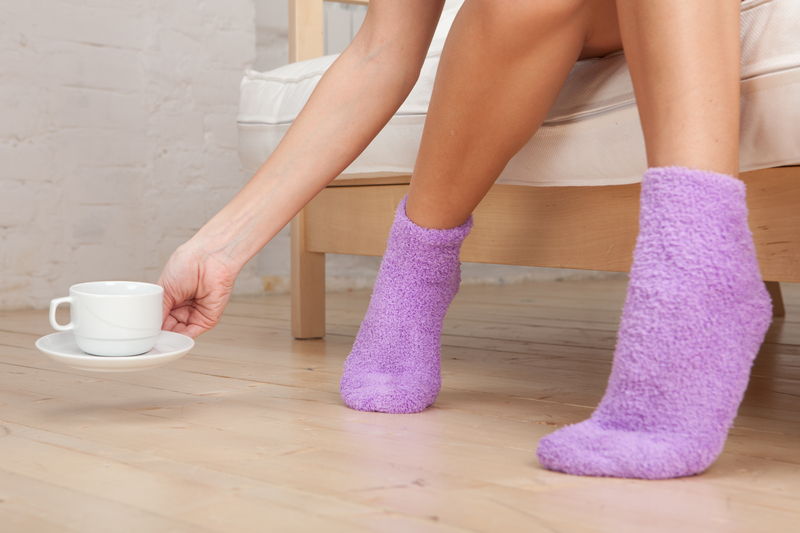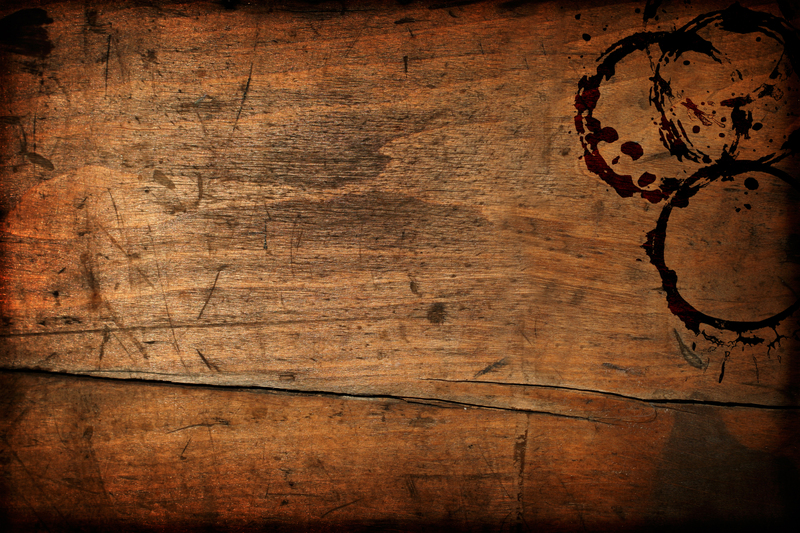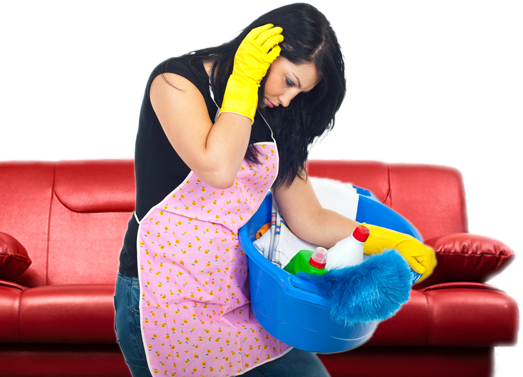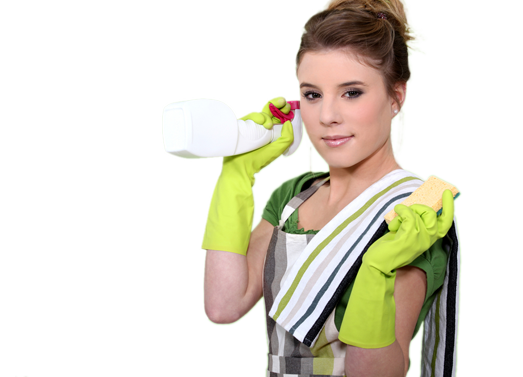Discover the Secrets to a Mold-Free Bathroom Experience
Posted on 22/08/2025
Discover the Secrets to a Mold-Free Bathroom Experience
A clean, fresh-smelling, and mold-free bathroom is something every homeowner dreams of. However, bathrooms are naturally humid environments, making them vulnerable to mold growth. Mold not only affects the aesthetics of your bathroom but can also harm your health and degrade structural materials. If you're eager to discover the secrets to a mold-free bathroom experience and reclaim your oasis, this comprehensive guide will walk you through prevention, cleaning tips, maintenance strategies, and the best bathroom products for long-term protection.

Understanding Mold in Bathrooms
Before unlocking the secrets to a mold-free bathroom, let's first understand why mold develops in bathrooms. Mold is a type of fungus that thrives in moist, warm environments with poor ventilation--a description that fits most bathrooms perfectly. Tiles, grout, shower curtains, and even ceilings can quickly become breeding grounds for mold spores once the right conditions are met.
- Mold reproduces through spores: These tiny particles are almost always present in the air and settle in damp areas.
- Common types: Black mold (Stachybotrys chartarum), Penicillium, and Aspergillus are frequently found in bathrooms.
- Health risks: Mold exposure can trigger allergies, asthma, respiratory problems, and, in extreme cases, other serious health concerns.
With this foundational knowledge, let's explore how you can create a truly mold-free bathroom for a healthier lifestyle.
Essential Secrets for Mold-Free Bathrooms
1. Prioritize Proper Ventilation
Good ventilation is the backbone of any mold-free bathroom experience. Excess moisture is the main culprit for mold growth, so it's vital to keep your bathroom as dry as possible.
- Install or upgrade your exhaust fan: Ensure your bathroom fan is vented outside, not just into the attic or ceiling cavity. Running the fan during and at least 20 minutes after showering significantly reduces humidity.
- Open windows and doors: If possible, leave windows open during and after using the shower or bathtub.
- Consider a dehumidifier: In bathrooms without windows, a compact dehumidifier can help maintain optimal humidity levels (ideally under 50%).
2. Embrace Routine Cleaning Habits
A regular cleaning schedule is crucial to stave off mold before it takes hold. Focus on high-risk areas and use products that can prevent spore build-up.
- Wipe down surfaces: After every shower or bath, use a squeegee or towel to remove water from the walls, floors, and glass doors.
- Clean grout lines frequently: Use a toothbrush or small scrub brush and a cleaning solution to scrub grout. This removes soap, body oils, and residual moisture where mold likes to hide.
- Wash shower curtains and liners: Opt for machine-washable liners and curtains. Wash them regularly to prevent mold and mildew stains.
- Disinfect drains and fixtures: Use a vinegar solution or an antibacterial cleaner to kill hidden mold in drains, faucets, and behind or under fixtures.
3. Control Bathroom Humidity
Humidity is a silent supporter of mold. Achieving controlled humidity is key to keeping your bathroom dry and inhospitable for mold growth.
- Check indoor humidity levels: Invest in a hygrometer to monitor humidity, ensuring it stays below 60%, ideally between 30-50%.
- Promptly address leaks: Repair any leaking sinks, toilets, or showers immediately to prevent standing water and dampness.
- Utilize moisture-absorbing products: Products like silica gel, moisture absorbers, or natural alternatives (e.g., bamboo charcoal bags) placed discreetly in your bathroom can help soak up excess moisture.
4. Upgrade to Mold-Resistant Materials
Renovating or updating your bathroom? Use this opportunity to select mold-resistant materials that minimize spore growth and make cleaning easier.
- Mold-resistant paint: Specially formulated paints and primers create a protective barrier that inhibits mold.
- Treated grout and sealant: Use grout with built-in mildew inhibitors and seal it annually to keep out water.
- PVC and glass over fabric: Swap out fabric shower curtains for glass screens or mold-resistant PVC alternatives.
- Waterproof wall panels: Panels made from fiberglass, acrylic, or PVC are less porous than traditional tiles and grout, making them less hospitable to mold.
Expert Tips for a Long-Lasting Mold-Free Bathroom
5. Protect Vulnerable Areas
Some bathroom spots are notorious for growing mold, even with a solid daily routine. Particular vigilance will ensure a truly mold-free washroom experience.
- Behind and under sinks & toilets: Check for condensation or leaks.
- Inside cabinets or vanities: Avoid storing damp towels, keep doors slightly ajar for airflow, and occasionally deep clean.
- Windowsills and trims: Condensation often collects here--wipe and dry regularly.
6. Harness Natural Mold Fighters
If you prefer a greener, more natural approach, several home remedies are highly effective at keeping bathrooms mold-free:
- White vinegar: An excellent, safe mold killer. Spray undiluted where you see mold, let sit for an hour, then scrub clean.
- Baking soda: Mix with water into a paste for a gentle, abrasive cleaner that's safe for tiles and grout.
- Tea tree oil: Known for its antifungal properties. Mix a teaspoon with a cup of water and spray onto problem areas.
7. Maintain Plumbing and Fixtures
Leaky pipes and fixtures are common culprits for mold outbreaks. Stay proactive in checking and fixing issues as part of your mold-control strategy.
- Inspect plumbing regularly for drips, condensation, or pools of water.
- Clean aerators and faucet heads that can harbor mold.
- Seal joints and edges to prevent moisture from seeping into walls and cabinetry.
8. Don't Let Wet Towels Linger
Wet towels, bath mats, and sponges provide perfect breeding grounds for mildew and mold.
- Hang towels to dry immediately after use.
- Wash regularly and replace with fresh, dry options as often as possible.
- Choose quick-dry textiles designed to resist mold and bacteria.
The Best Mold-Prevention Products for Your Bathroom
Transforming your bathroom into a mold-resistant space can be made easier by investing in the right products. Here are some favorites among homeowners and cleaning experts:
- Mold-resistant caulking: Keeps seams and joints sealed against water intrusion. Reapply every couple of years for optimal protection.
- High-quality exhaust fans: Look for models with built-in humidity sensors or timers for automatic moisture control.
- Shower squeegees: Hanging a squeegee in the shower promotes effortless daily water removal before mold can form.
- Grout sealers: These products are essential for keeping water out of porous grout and inhibiting mold development.
- Mold-inhibiting bathroom sprays and wipes: Frequent use keeps surfaces clean and helps prevent spore buildup.
- Antimicrobial bath mats: Choose mats designed to resist moisture and mold, and wash them weekly.
The Role of Professional Mold Remediation
Even with diligent cleaning, sometimes mold problems persist or escalate. In such cases, professional mold remediation is the safest and most thorough route to a mold-free bathroom.
- Assessment: Professionals can identify hidden mold inside walls, ceilings, or under flooring, which is often missed by homeowners.
- Safe removal: They use specialized equipment and techniques to remove mold safely, preventing spores from spreading to other parts of the house.
- Prevention recommendations: Expert advice goes a long way in safeguarding your bathroom against repeat infestations.

Frequently Asked Questions (FAQs) About Mold Prevention in Bathrooms
Q1: How often should I clean my bathroom to prevent mold?
Ideally, clean damp surfaces daily (e.g., shower walls, floors), perform a full bathroom cleaning weekly, and conduct a deep clean or caulk/sealant update every few months.
Q2: What are the best natural solutions for keeping mold away?
White vinegar, baking soda, and tea tree oil are all-natural, non-toxic mold preventatives. Use them in regular cleaning to inhibit mold growth and remove existing stains.
Q3: Can houseplants in my bathroom help or hurt in mold prevention?
Indoor plants help regulate humidity and can improve air quality. However, overwatering and poor drainage create more moisture. Always balance your plant care and opt for species that thrive in high humidity.
Q4: Is black mold in the bathroom a serious health risk?
Black mold (Stachybotrys chartarum) produces toxins that can trigger allergic reactions, asthma, or more severe respiratory symptoms--especially in sensitive individuals. Remove any black mold promptly and, if the growth is extensive, seek professional help.
Conclusion: Enjoy a Mold-Free Bathroom for Life
The key to a mold-free bathroom experience lies in prevention, vigilance, and smart choices. By maintaining excellent ventilation, adopting diligent cleaning habits, investing in the right materials and products, and addressing moisture issues swiftly, you can safeguard your bathroom from the harmful effects of mold.
Remember, a mold-free bathroom is not just about spotless showers or sparkling tiles; it's about fostering a healthy and relaxing environment for you and your family. Implement these best practices and enjoy the peace of mind that comes from mastering the art of mold prevention.
- Stay proactive--regular inspections and maintenance are your best defenses.
- Choose quality materials--investing in mold-resistant finishes pays off in the long run.
- Act quickly--addressing leaks or outbreaks immediately prevents bigger headaches later.
Transform your routine and discover the secrets to a mold-free bathroom for years to come!




